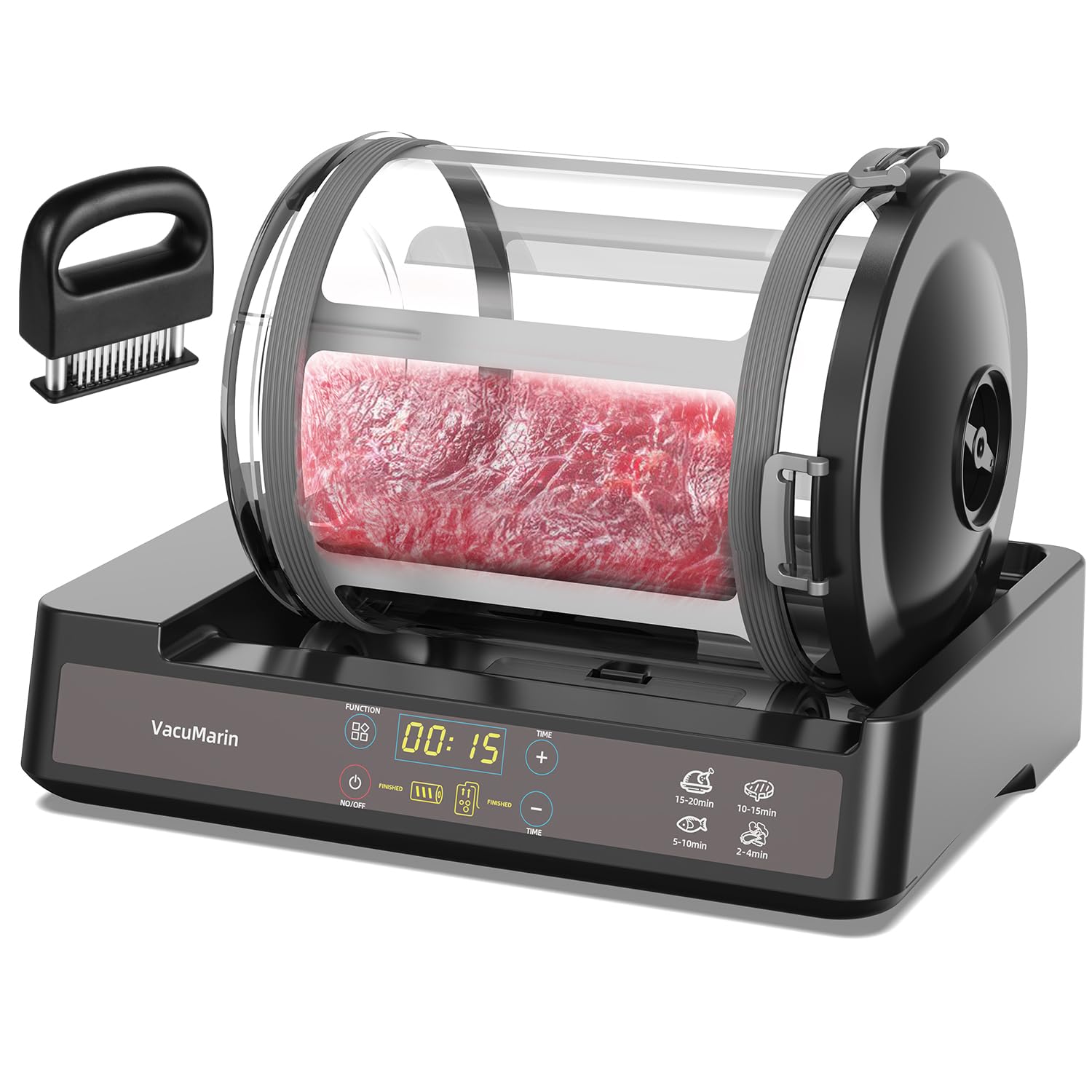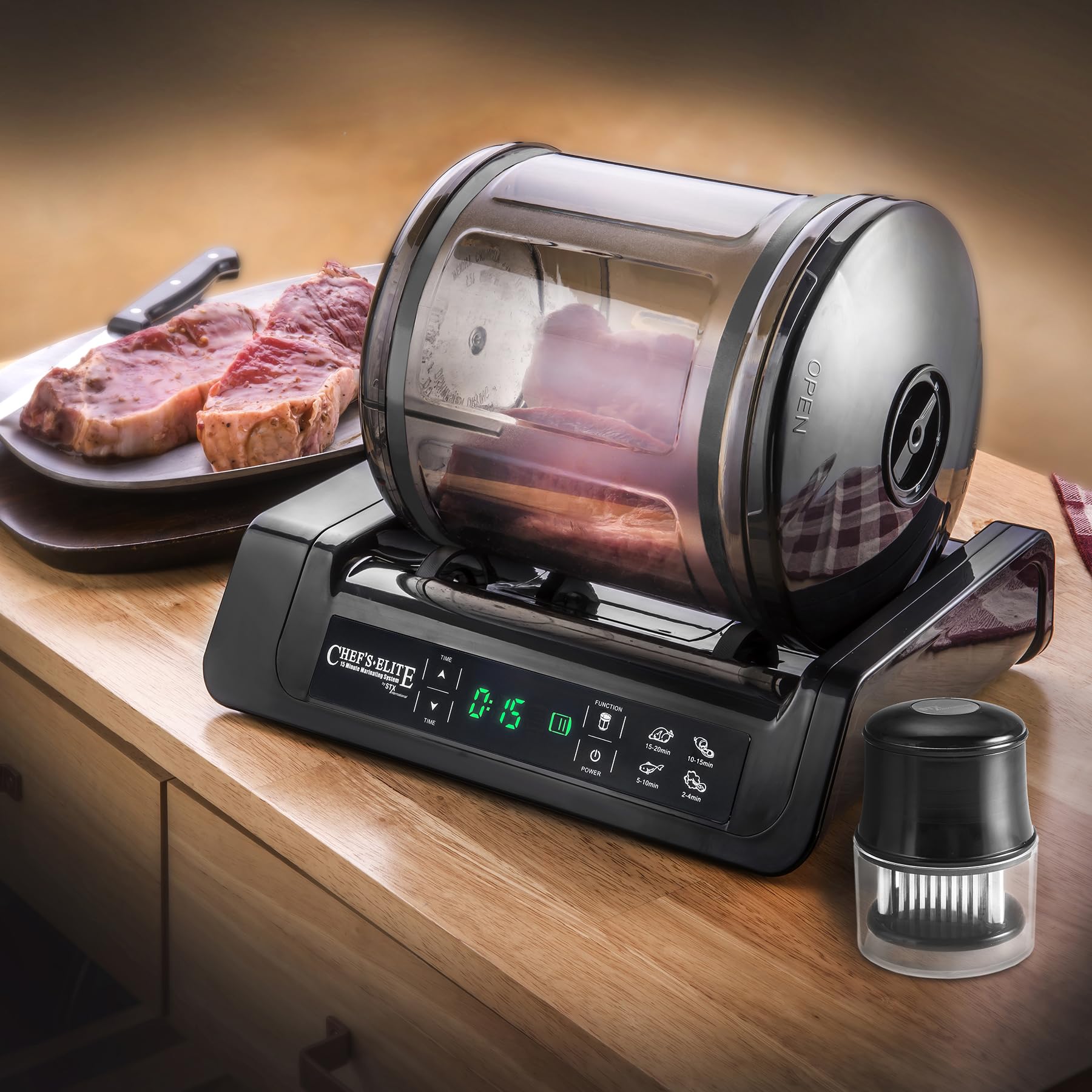10 years of experience as a food machinery equipment manufacturer
10 years of experience as a food machinery equipment manufacturer
In the realm of modern food preparation and commercial-scale production, specialized equipment plays a crucial role in enhancing efficiency, product quality, and consistency. Among these, the vacuum mixer tumbler and marinator stands out as a versatile piece of machinery designed to address several key processing steps, particularly for protein-based products. This type of equipment combines multiple functionalities to streamline operations and improve the final characteristics of food items.

A vacuum mixer tumbler and marinator integrates three primary processes: vacuum application, mechanical mixing, and gentle tumbling, often in conjunction with marination. Each of these contributes uniquely to the overall treatment of the food product.
The incorporation of vacuum technology is a significant aspect of these machines. By evacuating air from the processing chamber, several effects are achieved. Firstly, the removal of air can expand the cellular structure of food products, particularly meats. This expansion is believed to create more pathways for marinades to penetrate deeper and more quickly into the tissue. The reduced atmospheric pressure inside the drum facilitates a more efficient absorption of liquids and soluble ingredients.
Furthermore, operating under vacuum can reduce oxidation, which is beneficial for preserving the color and flavor of the product, especially in items prone to discoloration. It can also contribute to a denser final product by removing entrapped air, which may be desirable in certain applications like sausage making or formed meat products. The absence of air can also inhibit the growth of some aerobic bacteria, potentially contributing to extended shelf life, though this is usually part of a broader food safety strategy.
Tumbling involves the gentle, repeated lifting and dropping of the product within a rotating drum. This mechanical action serves multiple purposes. It ensures that all surfaces of the food items are consistently exposed to the marinade, leading to uniform flavor distribution and color development. The physical impact during tumbling can also contribute to the tenderization of meat products by working the muscle fibers. This process can help to break down tougher connective tissues, resulting in a more palatable texture.
The design of the baffles or flights inside the drum is critical to the effectiveness of the tumbling action. These are engineered to provide the right amount of lift and fall, ensuring thorough yet gentle treatment that avoids damaging the product’s integrity. The speed and duration of the tumbling cycle are typically adjustable to suit different types of products and desired outcomes.
Beyond tumbling and marination, many of these units also feature a robust mixing function. This allows for the thorough incorporation of various ingredients, such as spices, seasonings, binders, or brines, directly with the primary food product. For instance, in the preparation of seasoned ground meats, sausages, or meatball mixtures, the mixing action ensures an even distribution of all components. Some designs may use specialized paddles or mixing arms in conjunction with, or as an alternative to, the tumbling baffles to achieve an effective mix. This integrated mixing capability can eliminate the need for a separate mixing machine for certain processes, thereby saving space and reducing handling time.
Vacuum mixer tumblers and marinators are typically constructed with materials suitable for food contact and robust enough for industrial or heavy commercial use. Stainless steel is the predominant material for the drum, frame, and other product contact surfaces due to its durability, corrosion resistance, and ease of cleaning and sanitization, which are critical for maintaining hygiene standards in food processing environments.
Control systems can range from simple manual controls with timers and speed adjustments to sophisticated programmable logic controllers (PLCs). Advanced systems may allow users to create and store multiple recipes or processing programs, specifying parameters such as vacuum level, tumbling speed and duration, rest periods, and mixing intensity. This programmability helps ensure consistency across batches and can automate complex processing cycles.
Capacity is another important design consideration, with models available to suit various scales of operation, from smaller units for restaurants or butcher shops to large industrial machines capable of processing hundreds or even thousands of pounds per batch. Ease of cleaning is also a key design focus, often incorporating features like polished surfaces, accessible interiors, and tilt mechanisms for easy unloading and washing.
The versatility of vacuum mixer tumblers and marinators makes them suitable for a wide array of applications across the food sector.

The use of vacuum mixer tumblers and marinators offers several potential advantages for food businesses:
When considering the acquisition of a vacuum mixer tumbler and marinator, several factors should be evaluated. The required processing capacity, the types of products to be handled, and the specific features needed (e.g., level of automation, mixing attachments) are primary considerations. The available space, utility requirements (power, vacuum source if external), and ease of maintenance and sanitation are also important practical aspects. Proper training for operators is essential to maximize the benefits of the equipment and ensure safe operation.
In conclusion, the vacuum mixer tumbler and marinator is a sophisticated and highly functional piece of equipment that addresses critical needs in food processing. By combining vacuum technology with mechanical mixing and tumbling, it offers a pathway to improved product quality, enhanced operational efficiency, and greater consistency for a diverse range of food products, particularly in the meat, poultry, seafood, and plant-based protein sectors.
